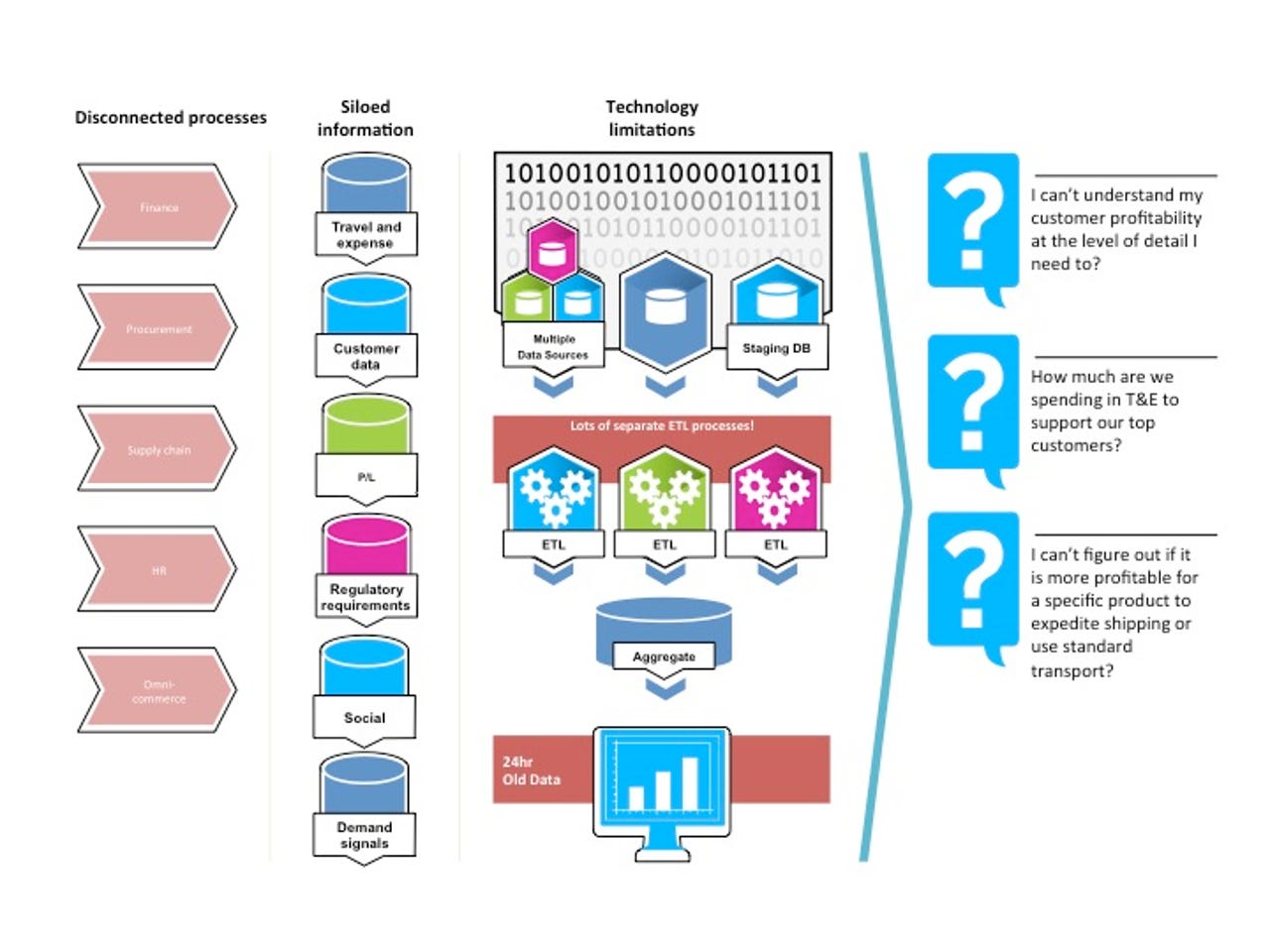Part1: Enable Your Digital Value Chain
The future of business in the digital information age is now. As I stated in my blog Digitize the core to master the Digital Transformation the business models of the future are already a reality - the Digital transformation is everywhere.
And there is already a network of networks - across social, business, and devices - is creating revolutionary conditions that can potentially double the current size of the economy to $90 trillion by the year 2020. This networked economy is creating new opportunities for business that touch every aspect of the value chain.
The Current Reality
Five years ago, there was only a handful of data sources, each with limited granularity. Now, every two days, we create as much data as we did from the dawn of civilization up until 2003. Information has exploded, and businesses need to figure out how to harness and take advantage of this shift.
Customers now have even more control of their purchasing decisions, and businesses struggle to understand customers' digital footprint to cater to their requirements. Talent strategies need to align with what the digital information age offers - more collaboration plus transparency. Resources need to be managed more efficiently to optimize the impact to the P/L, and businesses need to shift from traditional supplier interactions to leveraging the unconstrained access to global networks.
Relevancy and impact of the digital information age will vary for every organization and industry, but it is clear that business complexities must be reduced to drive the future as they can lead to lost sales and profits.
In addition, the prevalence of these complexities across the value chain results from the fact that today's systems are not able to support current requirements, they do not allow for real-time information, inter-connections between processes, or a holistic view of information internally and externally across all key stakeholders.

The Future of Business Requires Simplicity
Businesses can focus on simplicity by reshaping how they interact and make decisions. By leveraging a digital business platform, the following capabilities will be enabled:
You need a partner that can power your entire value chain and turn complexity into simplicity. By leveraging a modern, in-memory, digital business platform, the value chain will truly be digitized. This means that processes are redesigned by interconnecting the back office and front office, connecting with internal and external networks, and taking advantage of the Internet of Things.
Today's Reality: Value Chains Supported by Yesterday's Systems, Disconnected Processes, and Siloed Information
Businesses today struggle with too much complexity inhibiting them from addressing vital business requirements - meeting stakeholder expectations in real time. Current processes have been intrinsically designed inefficiently as the available technologies have forced organizations to use outdated capabilities such as batch jobs and multiple data sources. Systems are built to support yesterday's business and not what the future requires.
Siloed information makes decision compounds the delays when decisions need to be made across end-to-end processes spanning multiple business areas. Ultimately, even the processes themselves are not integrated, leading to even more delays. The transition to the digital economy, the Internet of Things, social media, and other external, structured and unstructured data flows adds to the complexities that must be addressed across the entire value chain before running simple can become a reality.
Time for a New Mandate: Run Simple
Business and IT simplicity at the core of the digital value chain
Running simple requires a fully optimized end-to-end digital value chain. Outlined below are key attributes required to address this new reality:
With the digital value chain enabled by the digital business platform, opportunities are available to drive value and optimize your customers' experience. This platform provides the foundation required to support real-time decisions across all areas that are part of a digital value chain so that businesses can focus on strategic priorities versus spending their time keeping the lights on.
Looking forward to your feedback and stay tuned for more. Meanwhile follow me via @SDenecken